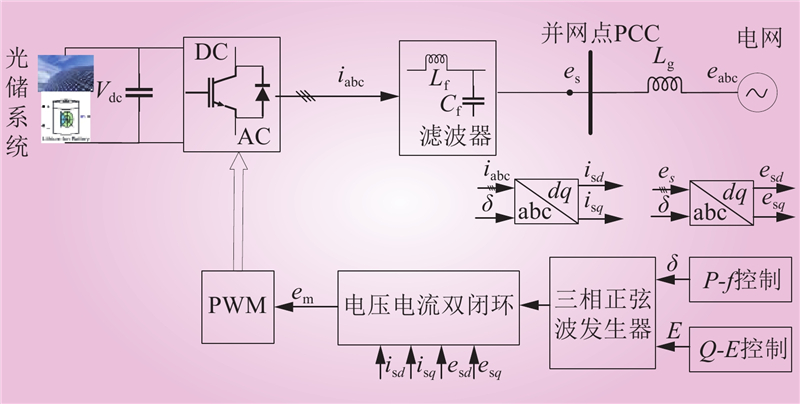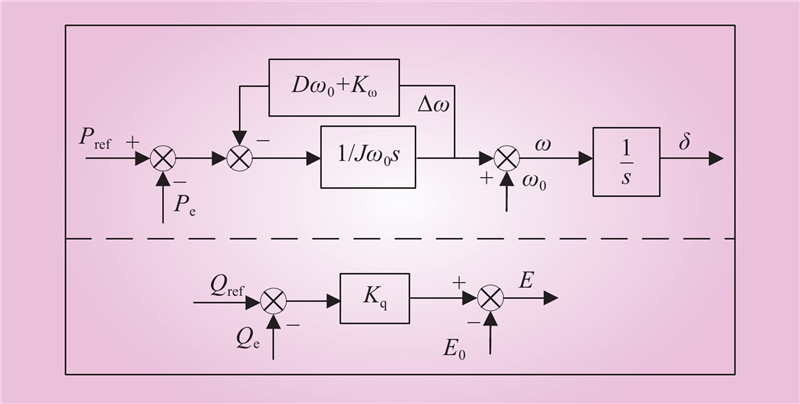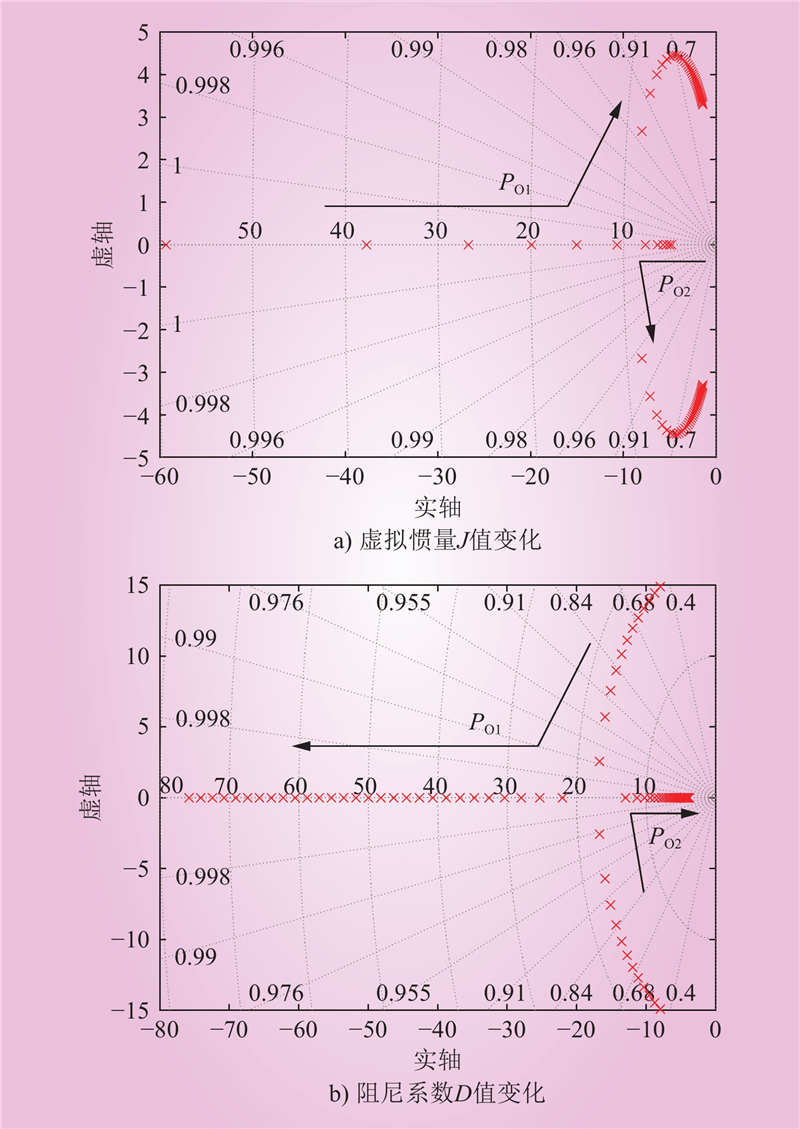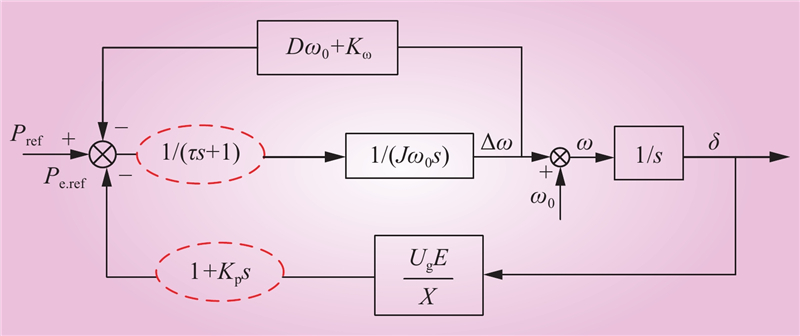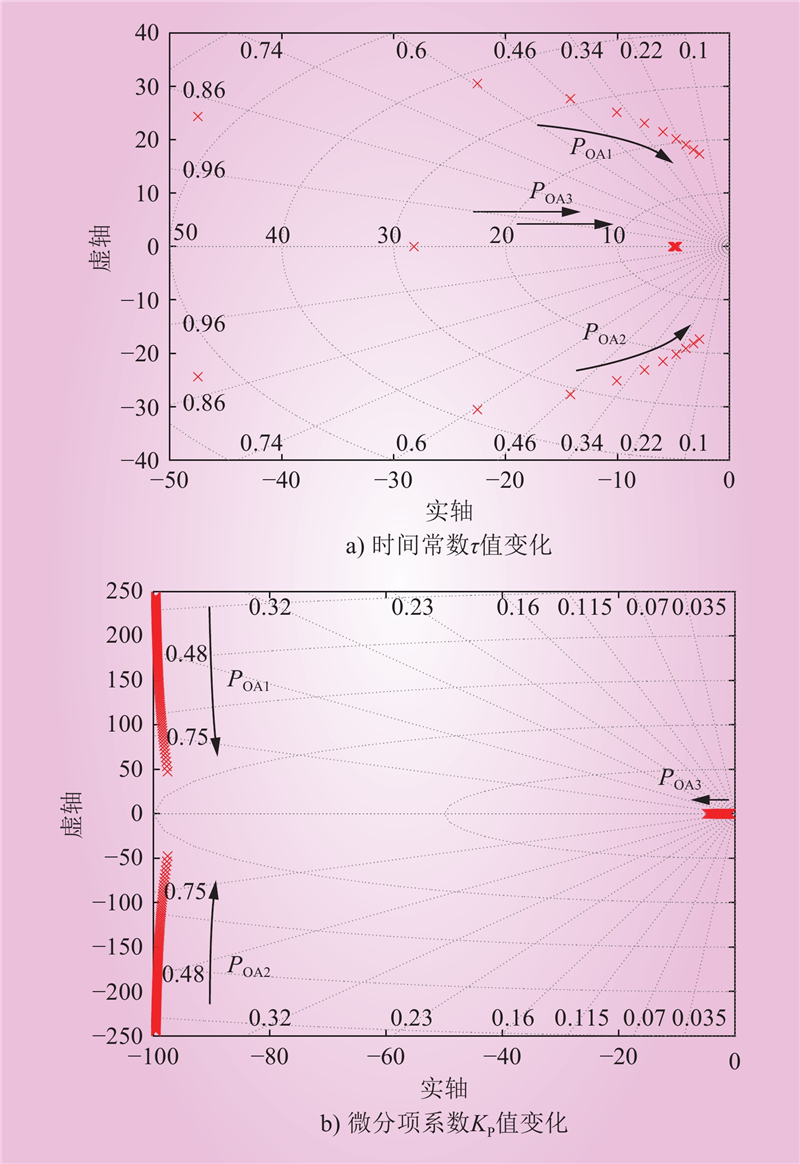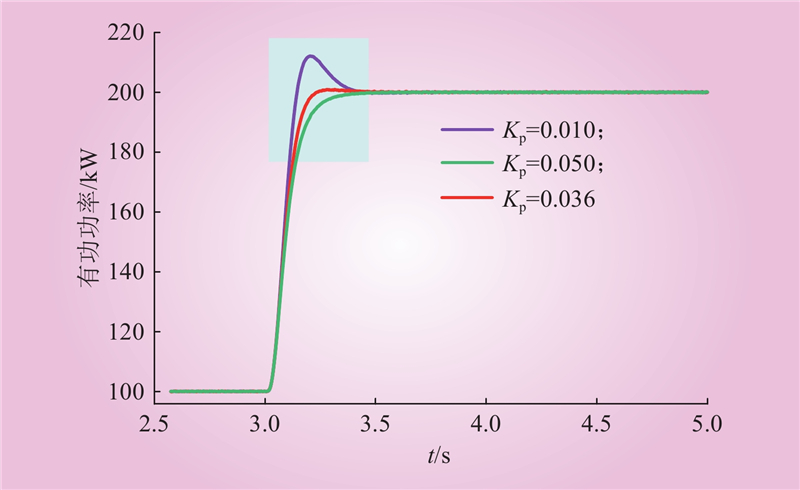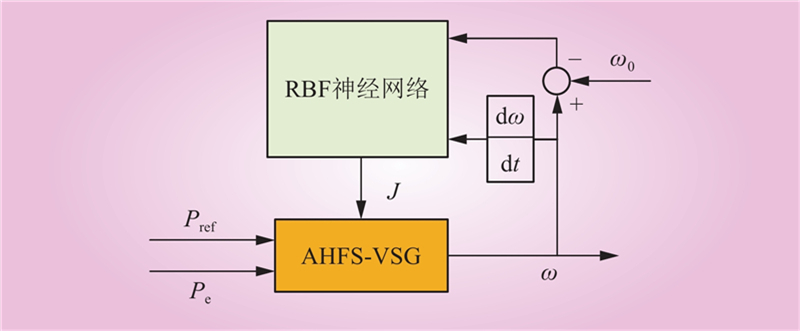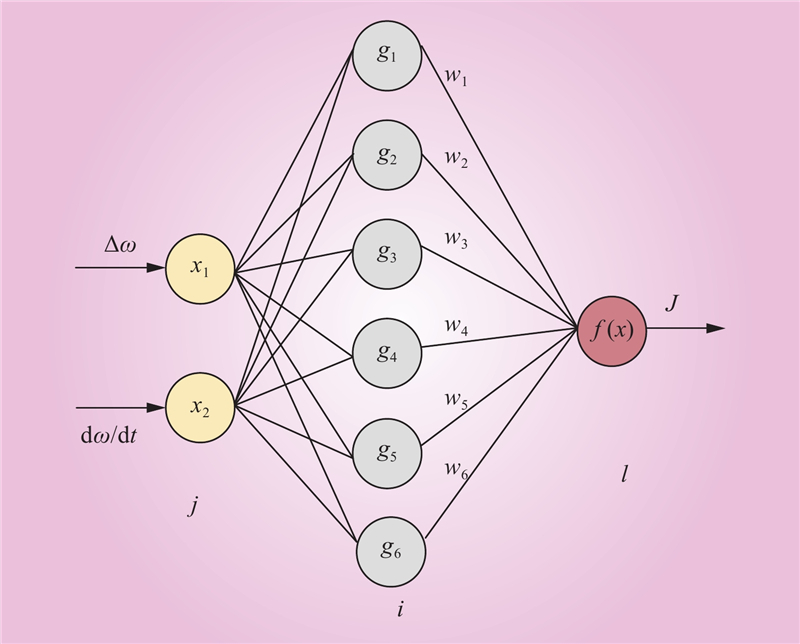| 1 |
黄龑, 郝迎鹏, 汪慧娴, 等. 基于二阶统一模型的分布式发电并网同步控制研究[J]. 中国电力, 2023, 56 (12): 41- 50.
DOI
|
|
HUANG Yan, HAO Yingpeng, WANG Huixian, et al. Research on synchronization control of distributed generation based on second-order unified model[J]. Electric Power, 2023, 56 (12): 41- 50.
DOI
|
| 2 |
吴磊, 韩冬, 毛贵江, 等. 适应分布式发电市场化交易的过网费计算方法[J]. 上海交通大学学报, 2023, 57 (7): 887- 898.
|
|
WU Lei, HAN Dong, MAO Guijiang, et al. Calculation method of network usage charge for market-oriented trading in distributed generation market[J]. Journal of Shanghai Jiaotong University, 2023, 57 (7): 887- 898.
|
| 3 |
李小菊, 李青兰, 詹航, 等. 动态无功电压控制对频率振荡的影响及附加阻尼控制[J]. 南方电网技术, 2021, 15 (6): 71- 77.
|
|
LI Xiaoju, LI Qinglan, ZHAN Hang, et al. Effect of dynamic reactive power-voltage control on frequency oscillation and supplementary damping control[J]. Southern Power System Technology, 2021, 15 (6): 71- 77.
|
| 4 |
詹长江, 吴恒, 王雄飞, 等. 构网型变流器稳定性研究综述[J]. 中国电机工程学报, 2023, 43 (6): 2339- 2359.
|
|
ZHAN Changjiang, WU Heng, WANG Xiongfei, et al. An overview of stability studies of grid-forming voltage source converters[J]. Proceedings of the CSEE, 2023, 43 (6): 2339- 2359.
|
| 5 |
GUO L L, XU Z Y, JIN N, et al. A weighted voltage model predictive control method for a virtual synchronous generator with enhanced parameter robustness[J]. Protection and Control of Modern Power Systems, 2021, 6 (4): 1- 11.
|
| 6 |
张茜, 毛义鹏, 余乐, 等. 适用于无直流侧电压传感器单相级联H桥型光伏逆变器的直接功率模型预测控制方法[J]. 中国电力, 2022, 55 (2): 172- 180.
DOI
|
|
ZHANG Qian, MAO Yipeng, YU Le, et al. Direct power model predictive control method for DC-side sensor-less single-phase cascaded H-bridges photovoltaic inverters[J]. Electric Power, 2022, 55 (2): 172- 180.
DOI
|
| 7 |
杜毅, 郑超, 孙华东. 构网型VSC暂态稳定机理及改进限幅策略[J]. 中国电机工程学报, 2024, 44 (10): 3753- 3766.
|
|
DU Yi, ZHENG Chao, SUN Huadong. Transient stability mechanism analysis of the grid forming voltage source converter and the improved limiting method[J]. Proceedings of the CSEE, 2024, 44 (10): 3753- 3766.
|
| 8 |
张江丰, 柯松, 陈文进, 等. 光伏电站自备用可调的虚拟同步控制调频策略[J]. 中国电力, 2024, 57 (11): 108- 118.
DOI
|
|
ZHANG Jiangfeng, KE Song, CHEN Wenjin, et al. Virtual synchronous control frequency regulation strategy for adjustable self-standby rate in photovoltaic plants[J]. Electric Power, 2024, 57 (11): 108- 118.
DOI
|
| 9 |
戎士洋, 范辉, 梁纪峰, 等. 多VSG单元的惯量协调控制策略研究[J]. 电力科学与技术学报, 2024, 39 (2): 170- 180.
|
|
RONG Shiyang, FAN Hui, LIANG Jifeng, et al. Research on inertia coordinated control strategy of multiple VSG cells[J]. Journal of Electric Power Science and Technology, 2024, 39 (2): 170- 180.
|
| 10 |
王立娜, 王逸超, 谭丽平, 等. 基于自适应指数函数的变参数VSG控制[J]. 电力科学与技术学报, 2023, 38 (3): 124- 131.
|
|
WANG Lina, WANG Yichao, TAN Liping, et al. Variable parameter VSG control based on adaptive exponential function[J]. Journal of Electric Power Science and Technology, 2023, 38 (3): 124- 131.
|
| 11 |
林磊, 温步瀛. 基于动态特性的改进型VSG电压控制策略[J]. 广东电力, 2020, 33 (11): 44- 50.
DOI
|
|
LIN Lei, WEN Buying. Improved voltage control strategy of VSG based on dynamic characteristics[J]. Guangdong Electric Power, 2020, 33 (11): 44- 50.
DOI
|
| 12 |
杨旭红, 金宏艳, 刘众鑫, 等. 光储逆变器的虚拟同步机自适应控制策略研究[J]. 电力科学与技术学报, 2024, 39 (2): 181- 189.
|
|
YANG Xuhong, JIN Hongyan, LIU Zhongxin, et al. Research on adaptive control strategy of virtual synchronous machine applied for the photovoltaic and energy storage inverter[J]. Journal of Electric Power Science and Technology, 2024, 39 (2): 181- 189.
|
| 13 |
杨力, 朱晓纲, 李勇, 等. 规模化储能虚拟同步控制策略及其惯量分析[J]. 电力科学与技术学报, 2024, 39 (2): 190- 197.
|
|
YANG Li, ZHU Xiaogang, LI Yong, et al. Virtual synchronous control strategy and inertia analysis of large-scale energy storage[J]. Journal of Electric Power Science and Technology, 2024, 39 (2): 190- 197.
|
| 14 |
LI M X, YU P, HU W H, et al. Phase feedforward damping control method for virtual synchronous generators[J]. IEEE Transactions on Power Electronics, 2022, 37 (8): 9790- 9806.
DOI
|
| 15 |
岳家辉, 张新燕, 周鹏, 等. 基于自适应惯量阻尼的双馈风电机组虚拟同步控制策略[J]. 电力系统及其自动化学报, 2021, 33 (9): 40- 48.
|
|
YUE Jiahui, ZHANG Xinyan, ZHOU Peng, et al. Virtual synchronization control strategy for double-fed wind turbines based on adaptive inertia damping[J]. Proceedings of the CSU-EPSA, 2021, 33 (9): 40- 48.
|
| 16 |
于晶荣, 孙文, 于佳琪, 等. 基于惯性自适应的并网逆变器虚拟同步发电机控制[J]. 电力系统保护与控制, 2022, 50 (4): 137- 144.
|
|
YU Jingrong, SUN Wen, YU Jiaqi, et al. Virtual synchronous generator control of a grid-connected inverter based on adaptive inertia[J]. Power System Protection and Control, 2022, 50 (4): 137- 144.
|
| 17 |
兰征, 龙阳, 曾进辉, 等. 考虑超调的虚拟同步发电机暂态功率振荡抑制策略[J]. 电力系统自动化, 2022, 46 (11): 131- 141.
|
|
LAN Zheng, LONG Yang, ZENG Jinhui, et al. Transient power oscillation suppression strategy of virtual synchronous generator considering overshoot[J]. Automation of Electric Power Systems, 2022, 46 (11): 131- 141.
|
| 18 |
李新, 刘国梁, 杨苒晨, 等. 具有暂态阻尼特性的虚拟同步发电机控制策略及无缝切换方法[J]. 电网技术, 2018, 42 (7): 2081- 2088.
|
|
LI Xin, LIU Guoliang, YANG Ranchen, et al. VSG control strategy with transient damping term and seamless switching control method[J]. Power System Technology, 2018, 42 (7): 2081- 2088.
|
| 19 |
KARIMI A, KHAYAT Y, NADERI M, et al. Inertia response improvement in AC microgrids: a fuzzy-based virtual synchronous generator control[J]. IEEE Transactions on Power Electronics, 2020, 35 (4): 4321- 4331.
DOI
|
| 20 |
朱平平. 基于模糊PID的核环境机器人电液比例位置控制系统设计研究[D]. 衡阳: 南华大学, 2020.
|
|
ZHU Pingping. Design and research of electro-hydralicproportional position control system fornuclear environment robot based on fuzzy PID. Hengyang: University of South China, 2020.
|
| 21 |
胡昆, 李思超, 鲁元昊, 等. 基于模糊 PID 的电液位置伺服系统建模与仿真[J]. 机电工程技术, 2023, 52 (4): 90- 94.
DOI
|
|
HU Kun, LI Sichao, LU Yuanhao, et al. Modeling and simulation of electro-hydraulic position servo system based on fuzzy PID[J]. Mechanical Electrical Enginering Technology, 2023, 52 (4): 90- 94.
DOI
|
| 22 |
WANG Y, WAI R J. Adaptive fuzzy-neural-network power decoupling strategy for virtual synchronous generator in micro-grid[J]. IEEE Transactions on Power Electronics, 2022, 37 (4): 3878- 3891.
DOI
|
| 23 |
赵金辉, 刘立晶, 杨学军, 等. 播种机开沟深度控制系统的设计与室内试验[J]. 农业工程学报, 2015, 31 (6): 35- 41.
|
|
ZHAO Jinhui, LIU Lijing, YANG Xuejun, et al. Design and laboratory test of control system for depth of furrow opening[J]. Transactions of the Chinese Society of Agricultural Engineering, 2015, 31 (6): 35- 41.
|
| 24 |
JIN W G, CHEN L, CHEN H K, et al. A novel evaluation method of the hosting capacity of multiple renewable energy stations accessed into a power system[J]. Energy Reports, 2023, 9, 56- 65.
DOI
|
| 25 |
张子星, 赵晋斌, 曾志伟, 等. 基于RBF的VSG虚拟惯量和动态阻尼补偿自适应控制[J]. 电力系统保护与控制, 2024, 52 (2): 155- 164.
|
|
ZHANG Zixing, ZHAO Jinbin, ZENG Zhiwei, et al. VSG virtual inertia and dynamic damping compensation adaptive control based on RBF[J]. Power System Protection and Control, 2024, 52 (2): 155- 164.
|



